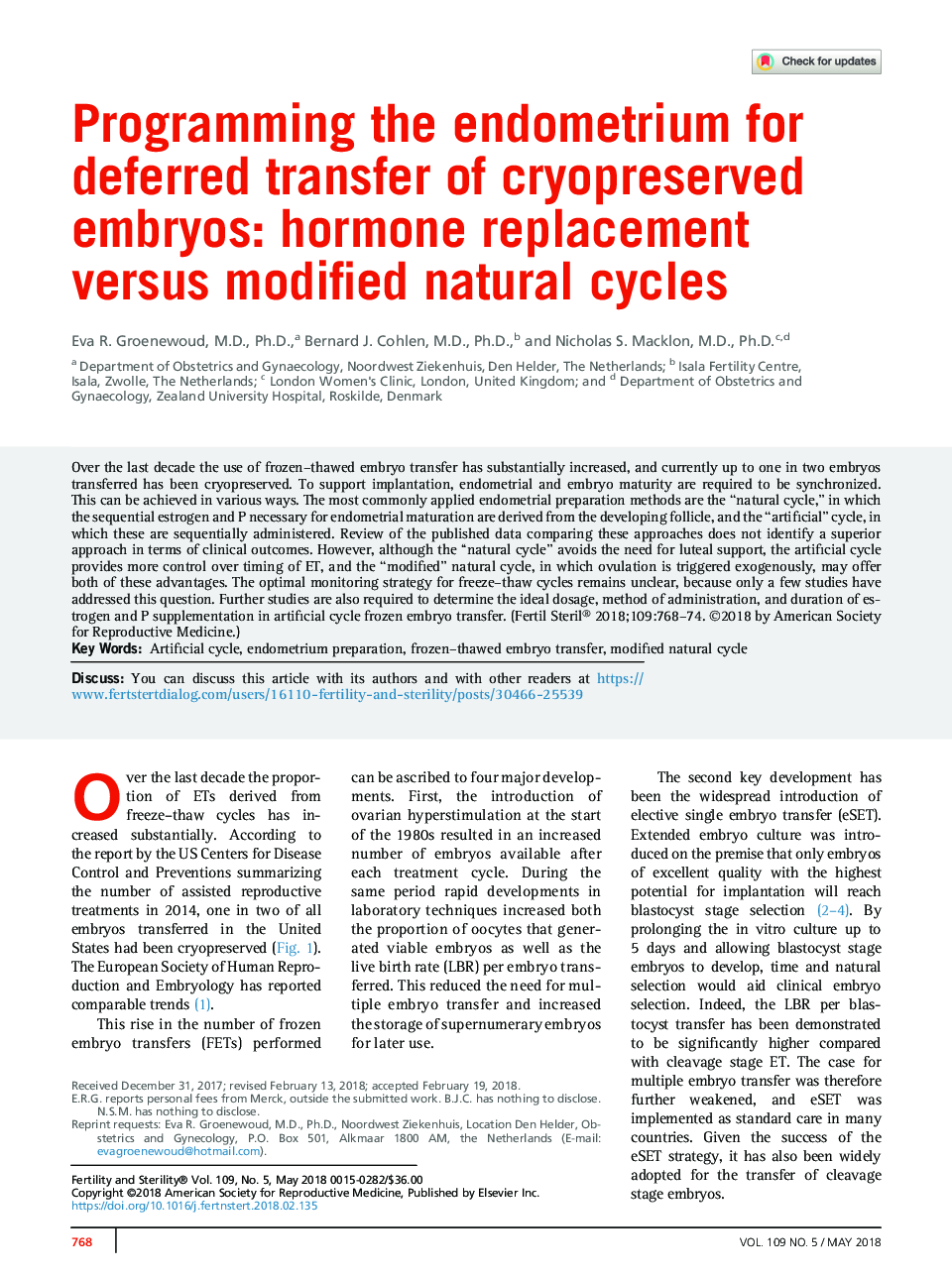| Article ID | Journal | Published Year | Pages | File Type |
|---|---|---|---|---|
| 8779543 | Fertility and Sterility | 2018 | 7 Pages |
Abstract
Over the last decade the use of frozen-thawed embryo transfer has substantially increased, and currently up to one in two embryos transferred has been cryopreserved. To support implantation, endometrial and embryo maturity are required to be synchronized. This can be achieved in various ways. The most commonly applied endometrial preparation methods are the “natural cycle,” in which the sequential estrogen and P necessary for endometrial maturation are derived from the developing follicle, and the “artificial” cycle, in which these are sequentially administered. Review of the published data comparing these approaches does not identify a superior approach in terms of clinical outcomes. However, although the “natural cycle” avoids the need for luteal support, the artificial cycle provides more control over timing of ET, and the “modified” natural cycle, in which ovulation is triggered exogenously, may offer both of these advantages. The optimal monitoring strategy for freeze-thaw cycles remains unclear, because only a few studies have addressed this question. Further studies are also required to determine the ideal dosage, method of administration, and duration of estrogen and P supplementation in artificial cycle frozen embryo transfer.
Related Topics
Health Sciences
Medicine and Dentistry
Obstetrics, Gynecology and Women's Health
Authors
Eva R. M.D., Ph.D., Bernard J. M.D., Ph.D., Nicholas S. M.D., Ph.D.,
